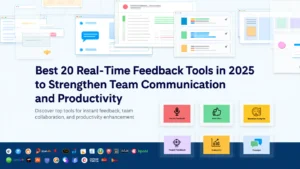What is Experiential Marketing?
Experiential marketing, also known as engagement marketing, is a strategy that directly engages consumers and encourages them to participate in a brand experience. This type of marketing focuses on creating memorable experiences that allow consumers to interact with a brand in a meaningful way. Instead of traditional advertising, experiential marketing aims to create a real-life connection between the consumer and the brand.
Why Brands Use Experiential Marketing?
Experiential marketing has become a vital strategy for brands aiming to connect with their audience on a deeper level. Unlike traditional marketing methods that focus on conveying messages through ads and promotions, experiential marketing emphasizes creating memorable and engaging experiences for consumers. This approach not only captures attention but also fosters lasting relationships, drives word-of-mouth marketing, and differentiates brands in a crowded marketplace. Here’s a detailed look at why brands use experiential marketing and the benefits it offers.
Building Stronger Relationships
Experiential marketing creates opportunities for brands to interact with consumers on a personal level. Unlike traditional advertising, which often feels one-sided, experiential marketing invites consumers to actively participate. This participation fosters a sense of connection and belonging. When consumers feel valued and involved, they are more likely to develop a positive relationship with the brand. These strong relationships can lead to increased customer loyalty and repeat business.
Increasing Brand Awareness
Experiential marketing campaigns are designed to be memorable and shareable. When consumers have a positive and unique experience, they are likely to talk about it with their friends and family, both in person and on social media. This word-of-mouth marketing can significantly increase brand awareness. For example, a creative pop-up shop or an engaging brand activation can generate buzz and attract media coverage, further amplifying the brand’s reach.
Driving Word-of-Mouth Marketing
Positive experiences are powerful drivers of word-of-mouth marketing. When consumers have a memorable and enjoyable experience with a brand, they naturally want to share it with others. This sharing can occur through social media posts, online reviews, or casual conversations. Word-of-mouth recommendations are highly trusted by consumers, often more than traditional advertising. By creating experiences worth talking about, brands can leverage their customers as advocates who spread positive messages about their products or services.
Differentiating from Competitors
In a crowded market, standing out is crucial. Experiential marketing offers a way for brands to differentiate themselves by creating unique and engaging experiences that competitors may not offer. These experiences can highlight a brand’s values, personality, and strengths in ways that traditional advertising cannot. For example, an innovative product demonstration or a captivating brand event can set a brand apart from its competitors, making it more memorable and appealing to consumers.
Encouraging Trial and Adoption
Experiential marketing often involves product sampling or demonstrations, allowing consumers to try a product before making a purchase. This hands-on approach can be highly effective in encouraging trial and adoption. When consumers have the opportunity to experience a product firsthand, they can better understand its benefits and are more likely to make a purchase. This strategy is particularly useful for new product launches or for products that consumers may be hesitant to try based on advertisements alone.
Generating Immediate Feedback
Experiential marketing provides a platform for brands to receive immediate feedback from consumers. During events or activations, brands can interact directly with their audience, gaining insights into their preferences, opinions, and reactions. This real-time feedback can be invaluable for refining products, improving customer service, and adjusting marketing strategies. It allows brands to respond quickly to consumer needs and preferences, enhancing overall customer satisfaction.
Boosting Sales and ROI
Ultimately, the goal of any marketing strategy is to drive sales and achieve a strong return on investment (ROI). Experiential marketing can be highly effective in achieving this goal. By creating memorable and engaging experiences, brands can influence consumer perceptions and behaviors, leading to increased sales. Additionally, the buzz generated by successful experiential marketing campaigns can lead to long-term brand growth and profitability. When consumers have a positive experience, they are more likely to become repeat customers and recommend the brand to others, driving sustained revenue growth.
Different Types of Experiential Marketing
Experiential marketing encompasses a variety of strategies designed to engage consumers through immersive and memorable experiences. Here are some of the most effective types of experiential marketing:
Event Marketing
Event marketing involves creating or sponsoring events that allow brands to interact directly with their target audience. These events can range from large-scale festivals and trade shows to smaller, intimate gatherings. The goal is to create an environment where consumers can engage with the brand in a meaningful way.
Product Sampling
Product sampling is a straightforward yet effective form of experiential marketing. It involves giving consumers the opportunity to try a product for free. This hands-on experience can significantly influence purchasing decisions by allowing consumers to experience the product’s benefits firsthand.
Pop-Up shops
Pop-up shops are temporary retail spaces that create a unique shopping experience for consumers. These shops can be set up in various locations, such as shopping malls, busy streets, or even inside larger stores. Pop-up shops are designed to generate excitement and urgency, as they often operate for a limited time.
Brand Activations
Brand activations are interactive activities or installations that encourage consumers to engage with the brand. These activations can take many forms, from interactive displays and games to immersive experiences that tell a brand’s story.
Sponsorship
Sponsorship involves partnering with events, organizations, or causes that align with the brand’s values and target audience. By sponsoring these entities, brands can increase their visibility and credibility among their target consumers.
Experiential Tours
Experiential tours involve taking the brand experience on the road to reach consumers in different locations. These tours often feature branded vehicles or mobile units that can set up temporary interactive experiences in various cities.
Guerrilla Marketing
Guerrilla marketing involves unconventional and surprising tactics designed to attract attention and create a memorable impact. These tactics are often low-cost but high-impact, making them ideal for brands looking to make a big splash with limited resources.
How to Develop an Experiential Marketing Strategy?
Developing a successful experiential marketing strategy involves several key steps. This process ensures that the campaign is well-planned, targeted, and capable of achieving the desired outcomes. Here is a detailed guide to developing an experiential marketing strategy:
Define Goals and Objectives
The first step in creating an experiential marketing strategy is to clearly define what you want to achieve. Goals and objectives should be specific, measurable, attainable, relevant, and time-bound (SMART).
Understand Your Audience
Understanding your target audience is crucial for designing an experience that resonates with them. Conduct thorough research to gather insights into their preferences, behaviors, and needs.
Create a Unique Experience
The core of experiential marketing is creating a unique and memorable experience that engages consumers. The experience should align with your brand values and appeal to your target audience.
Leverage Technology
Incorporating technology can enhance the experiential marketing campaign and broaden its reach. Technology can create more engaging and immersive experiences.
Plan the Logistics
Careful planning and organization are essential to the success of an experiential marketing campaign. This includes selecting the right location, setting a budget, and coordinating all the details.
Promote the Experience
Promotion is key to attracting participants and generating buzz around the experiential marketing campaign. Use a mix of marketing channels to reach your audience.
Engage During the Event
During the event, actively engage with participants to create a memorable experience. Use real-time interactions to connect with your audience and gather feedback.
Measure Results
After the campaign, evaluate its success by measuring the results against your initial goals and objectives. Use both quantitative and qualitative data to assess the impact.
Follow Up
Maintaining the momentum after the event is important for sustaining engagement and building long-term relationships with participants.
Learn and Adapt
Finally, use the insights gained from the campaign to refine and improve your experiential marketing strategy for future initiatives.
By following these steps, brands can develop a comprehensive and effective experiential marketing strategy that engages consumers, builds brand loyalty, and achieves marketing objectives. At Pearl Lemon Experiences, our team is dedicated to helping brands create and execute impactful experiential marketing campaigns that deliver results.
Examples of Experiential Marketing
Experiential marketing campaigns can take many forms, but the most successful ones share a common goal: to create memorable and engaging experiences that connect consumers with a brand. Here are detailed examples of experiential marketing campaigns that have made a significant impact:
Coca-Cola’s "Share a Coke" Campaign
Coca-Cola’s “Share a Coke” campaign is one of the most iconic examples of experiential marketing. The campaign personalized Coca-Cola bottles by replacing the brand’s iconic logo with popular names. Consumers were encouraged to find bottles with their own name or the names of friends and family members and share a Coke with them.
- Engagement: The campaign invited consumers to participate in a fun and personalized experience, making it highly engaging. People enjoyed the novelty of finding their names and sharing photos on social media.
- Impact: The campaign generated massive social media engagement, with thousands of people posting pictures of their personalized Coke bottles. It also significantly increased sales and reinforced Coca-Cola’s brand image as a connector of people.
Red Bull’s Stratos Jump
Red Bull is known for its high-energy, extreme sports events, but the Stratos Jump took experiential marketing to new heights—literally. Red Bull sponsored Felix Baumgartner’s record-breaking freefall from the edge of space. This event was live-streamed and watched by millions of people around the world.
- Engagement: The Stratos Jump created a once-in-a-lifetime event that captured global attention. The suspense and thrill of the jump kept viewers engaged from start to finish.
- Impact: The event solidified Red Bull’s association with extreme sports and adventure. It generated significant media coverage and social media buzz, reinforcing the brand’s image and expanding its reach.
IKEA’s Sleepover Event
IKEA hosted a sleepover event where customers were invited to spend the night in one of their stores. Participants had the chance to experience IKEA’s products in a real-life setting, with activities like movie screenings, product demonstrations, and expert advice on sleep and home design.
- Engagement: The sleepover created a unique and immersive experience that allowed customers to interact with IKEA’s products in a comfortable and fun environment. The novelty of sleeping in a store added an element of excitement.
- Impact: The event generated significant media coverage and social media engagement, with participants sharing their experiences online. It strengthened customer relationships and showcased IKEA’s products in an innovative way.
Conclusion
Experiential marketing is a powerful tool that allows brands to create meaningful connections with their audience. By providing engaging and memorable experiences, brands can build stronger relationships, increase awareness, and stand out in a competitive market. At Pearl Lemon Experiences, our team is dedicated to helping brands create impactful experiential marketing strategies that resonate with their audience and achieve their goals.
By implementing the right strategy, brands can not only reach their target audience but also leave a lasting impression that translates into customer loyalty and advocacy.




